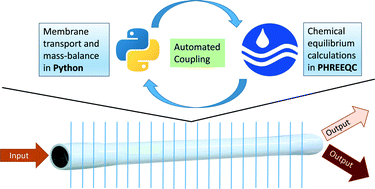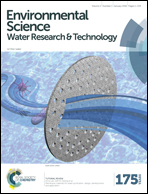Acid–base dynamics in seawater reverse osmosis: experimental evaluation of a reactive transport algorithm†
Abstract
Acid–base properties such as pH, alkalinity and boron speciation are essential factors for the design and operation of seawater reverse osmosis desalination, as they influence critical processes such as membrane scaling, biofouling and boron permeation. However, due to the high complexity of acid–base dynamics in both the retentate and permeate streams of reverse osmosis applications, the evolution of acid–base related properties in these streams is not yet completely understood. This often leads to overly simplified models resulting in inaccurate predictions, which may impede optimal design and thus the cost-effectiveness of the process. This paper introduces a unique computerized model dedicated to modeling acid–base dynamics within seawater reverse osmosis processes based on a reactive-transport algorithm, which couples transport and equilibria phenomena. The WATRO (Weak Acid Transport in Reverse Osmosis) simulation program based on this algorithm (freely available in the ESI) is experimentally tested here and shown to extend the predictive capacity and accuracy for these important quantities beyond previous work, and also beyond the capabilities of available commercial software. Implications related to 1st and 2nd pass CaCO3 scaling and boron rejection are exemplified and discussed. From the practical standpoint, the advantages of the suggested approach are particularly prominent for 2nd RO pass modeling and design, mainly due to the passage of hydronium and hydroxide ions through the membrane.



 Please wait while we load your content...
Please wait while we load your content...